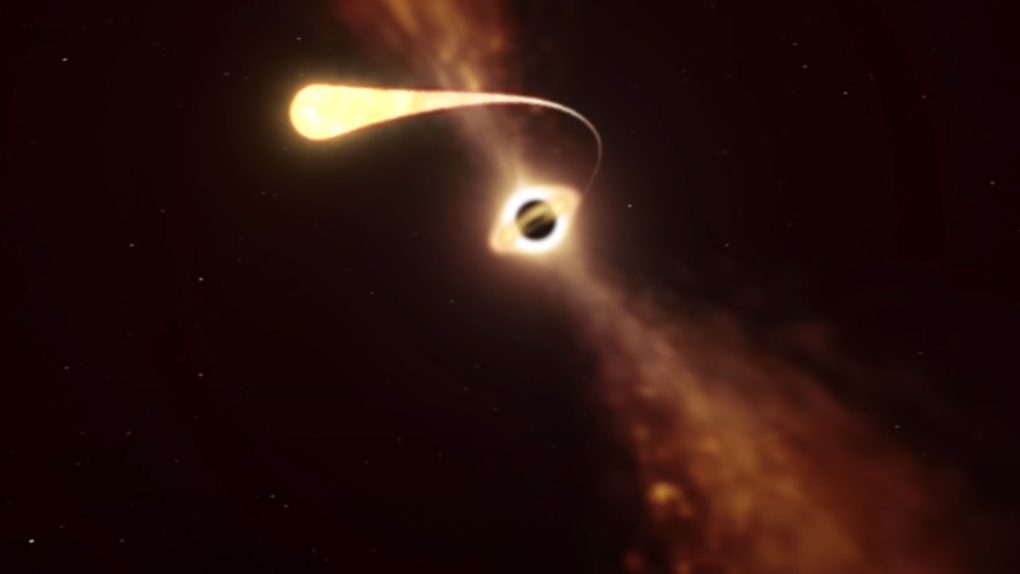- A distant black hole is sucking up a star that got a little too close for comfort.
- The event was detected by a pair of telescopes at the European Southern Observatory, and hints at a process called “spaghettification.”
- The star and black hole are hundreds of millions of light-years from Earth, so the event poses no threat to anything in our cosmic neighborhood.
are incredibly powerful forces of nature. They suck up anything that gets too close, including light, making them both ridiculously intriguing and very, very mysterious. Nothing is exempt from the intense gravitational pull of a black hole, and that includes stars. When a star gets a bit too comfy with a black hole, it can be torn apart entirely, broken down and utterly destroyed. Or, the black hole can turn the star into spaghetti. No, seriously.
As researchers describe in a new paper published in Monthly Notices of the Royal Astronomical Society, an event labeled AT2019qiz is in fact a star being slowly slurped up by a nearby black hole. The star is essentially being stretched out by the gravitational pull of the black hole, turning it into a thin band of star matter flowing directly into the black hole.
It’s some pretty wild stuff, and it gets even wilder when you check out the simulation that the researchers produced to give us non-scientific-types an idea of exactly what is going on. Check it out:
“This animation depicts a star experiencing spaghettification as it’s sucked in by a supermassive black hole during a ‘tidal disruption event,'” the researchers write. “In a new study, done with the help of ESO’s Very Large Telescope and ESO’s New Technology Telescope, a team of astronomers found that when a black hole devours a star, it can launch a powerful blast of material outwards.”
As you can see, the star material forms an intense disc around the black hole. This area where debris builds up around a black hole is called an accretion disk. It’s filled with gas and other material that is slowly being drawn into the black hole. When a black hole sucks up a star, it can fire off an intense amount of material into space. These jets of material have been detected before, though with our limited observations of nearby black holes we have to rely on simulations to get a clear picture of the process.
The good news, at least as far as the survival of the human race is concerned, is that this incredibly volatile black hole situation is taking place at a distance of 215 million light-years. It won’t affect us in any way, so you can sleep soundly. It is pretty cool to look at though, you have to admit.








